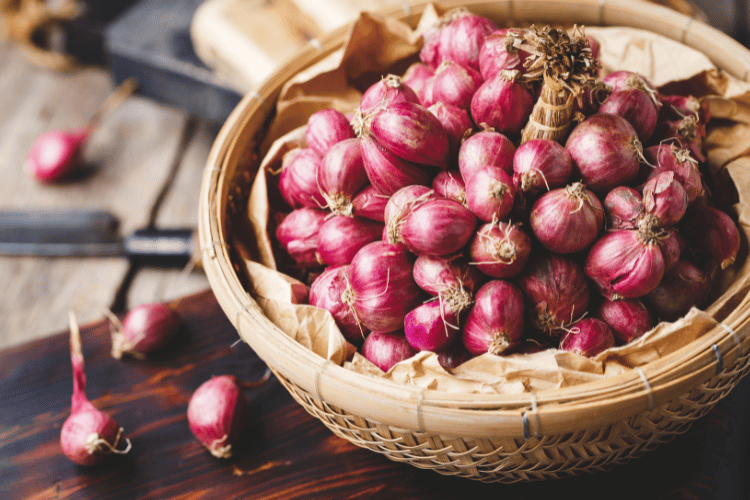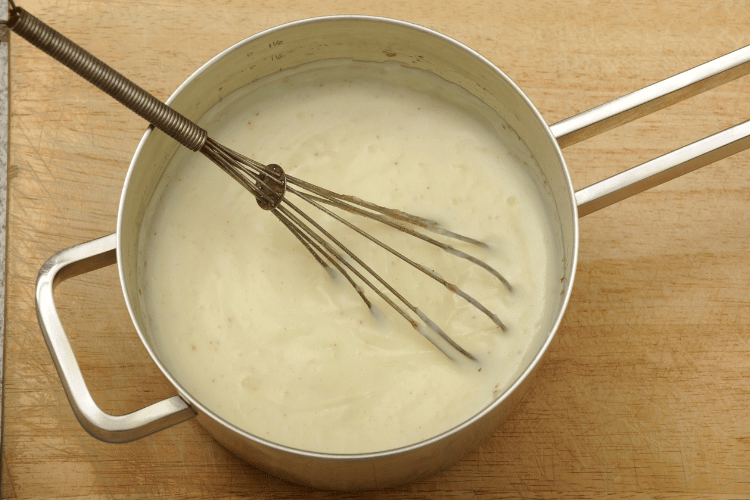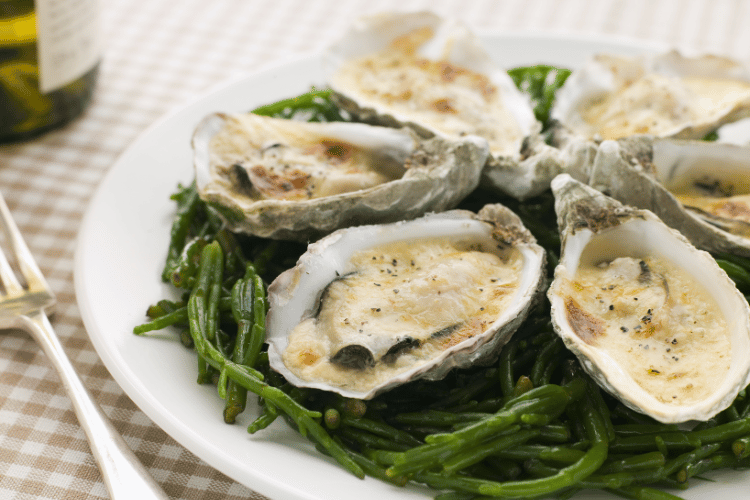Onion is a timeless kitchen staple that can elevate any dish, and it’s more than just an ingredient that adds depth and makes recipes savory. Did you know that onions are rich in antioxidants and have anti-inflammatory properties too?

Like onions, cloves are versatile spices that transform sauces or soups and incorporate a sweet, tangy aroma into any dish. They’re dried flower buds of the clove tree, and they can be used ground or whole.
Together, the onion and clove duo makes a powerful culinary ingredient that spices up any recipe.
Did you know there’s a unique way of incorporating these two power spices in recipes? If you’ve heard about an onion stuck with cloves, then you didn’t get it wrong.
Pricking an onion with cloves is a French technique that’s been used for ages, and we’re here to give you some details on how to do it.
Why Stick Cloves to an Onion?
The technique of sticking cloves to onions alongside other spices, like bay leaf, is of French origin. This technique is called onion pique, a French term that translates to studded onions.
Interestingly, using an onion slice studded with cloves infuses a rich, aromatic taste into your dish, making it tasty and savory. You can use clove-studded onions in stews, broths, soups, and sauces.
An onion stuck with cloves is an excellent addition to braised dishes too.
Quick Removal Is Key
While these spices are a staple to every dish, they can sometimes affect the eating experience. If you’ve experienced chewing on a hard piece of clove, then you know what I mean.
That’s why it’s essential to remove hard spices after the food finishes cooking, and this is when the technique of putting cloves in onions comes in handy.
Given the tiny size of your cloves, it can be challenging to remove them from your dish or soup, so inserting them into onions is helpful to remove them from the dish fast.
This technique allows you to take your spices away easily. Just use a ladle or spoon to scoop them out of the pot, and you’re ready!
It also saves you the hassle of sifting your soup or sauce, which risks harboring pathogens that may affect the taste.
How to Stick Cloves to an Onion: Three Easy Steps
Making onion pique is simple and only takes a few minutes—no special tools are needed! Here’s everything you need to do:
Step 1: Cut off the roots
Get a piece of onion and remove the roots that may have residual dirt. You can opt for any onion you need for your recipe, be it white, red, or a shallot.
Step 2: Slice and Peel the Onion
Peel the onion skin off, wash it in cool water, and slice it in half.
Step 3: Prick Onions with Cloves
Now, this is the fun part—it’s as simple as sticking a push pin to a corkboard!
You may use a knife to cut small slices in the onion and embed the cloves or stick the cloves directly onto the onion.
Stick two to three cloves on the cut side of the onion. It’s essential not to put too many cloves because they have a strong flavor, so they might overpower the other flavors in your dish.
Popular Sauces That Use Onion with Cloves
Onion and cloves are a staple to sauces or soups, and here are some delicious and classic sauces worth trying:
Béchamel Sauce

This classic French white sauce is used for lasagna and other pasta dishes. It’s a recipe worth trying, and it’s super easy to make!
Ingredients:
- Onion pique (½ onion, one bay leaf, and two whole cloves)
- 85 grams of unsalted butter
- 85 grams of all-purpose flour
- 2 cups whole milk
- A pinch of salt (¼ teaspoon or adjust according to liking)
Instructions:
- Melt butter over low heat.
- After melting the butter, add the flour and mix thoroughly for up to two minutes.
- Add the milk and mix thoroughly to get rid of clumps.
- Season the mixture with salt and add your onion pique.
- Let the mixture cook for ten minutes. Don’t forget to remove the onion pique before serving.
Mornay Sauce
Mornay sauce is a cheesy and versatile sauce that goes well with roasted cauliflower, pasta dishes, and gratin. Thankfully, it only takes less than an hour to make!

Ingredients:
- Onion pique (½ yellow onion, one bay leaf, and three whole cloves)
- 500 mL whole milk
- 50 grams of Gruyère cheese
- 50 grams of Parmesan cheese
- 3 tbsp all-purpose flour
- 3 tbsp unsalted butter
- A pinch of Kosher salt (adjust according to taste)
- A dash of white pepper (ground)
- 2 tsp yellow mustard
Instructions:
- Place the saucepan over medium heat and pour whole milk. Add the onion pique and allow the milk to simmer.
- Reduce the heat and stir the milk occasionally to prevent lumps. Do this for up to 10 minutes.
- Grate your cheeses while allowing the milk to simmer. Remember to finely grate the Parmesan using the smaller holes of the box grater. If you don’t have Parmesan cheese, Swiss cheese or Raclette are excellent alternatives. Set aside.
- Remove the saucepan from heat, take the onion pique out, and save it for later.
- Strain the milk through a sieve and reserve ¼ cup in a separate bowl. Set aside.
- With a new saucepan, heat unsalted butter over medium heat and add all-purpose flour. Whisk continuously for up to two minutes.
- Gradually pour the milk and continue whisking the mixture. Add the onion pique and allow the mixture to simmer.
- Gently stir the mixture with a wooden spoon until the sauce thickens.
- Remove the onion pique, add Kosher salt, white pepper, and stir.
- Reduce heat and gradually add the cheeses. Whisk the mixture continuously.
- Gradually add the reserved milk until the consistency is desirable.
- Lastly, put yellow mustard and mix properly.
Conclusion
Sticking cloves to an onion is a French technique called onion pique. Incorporating onion pique will not just elevate the flavor of every dish but will also make cooking easier.
Through this method, you can easily remove the spices without having to drain the liquid or fish the spices out.
- How To Fill a King Cake With Bavarian Cream - April 15, 2024
- Dealing With Mold on Oyster Mushrooms - April 9, 2024
- What Meat Goes With Pumpkin Ravioli? (Ravishing Ravioli Combos) - March 15, 2024
